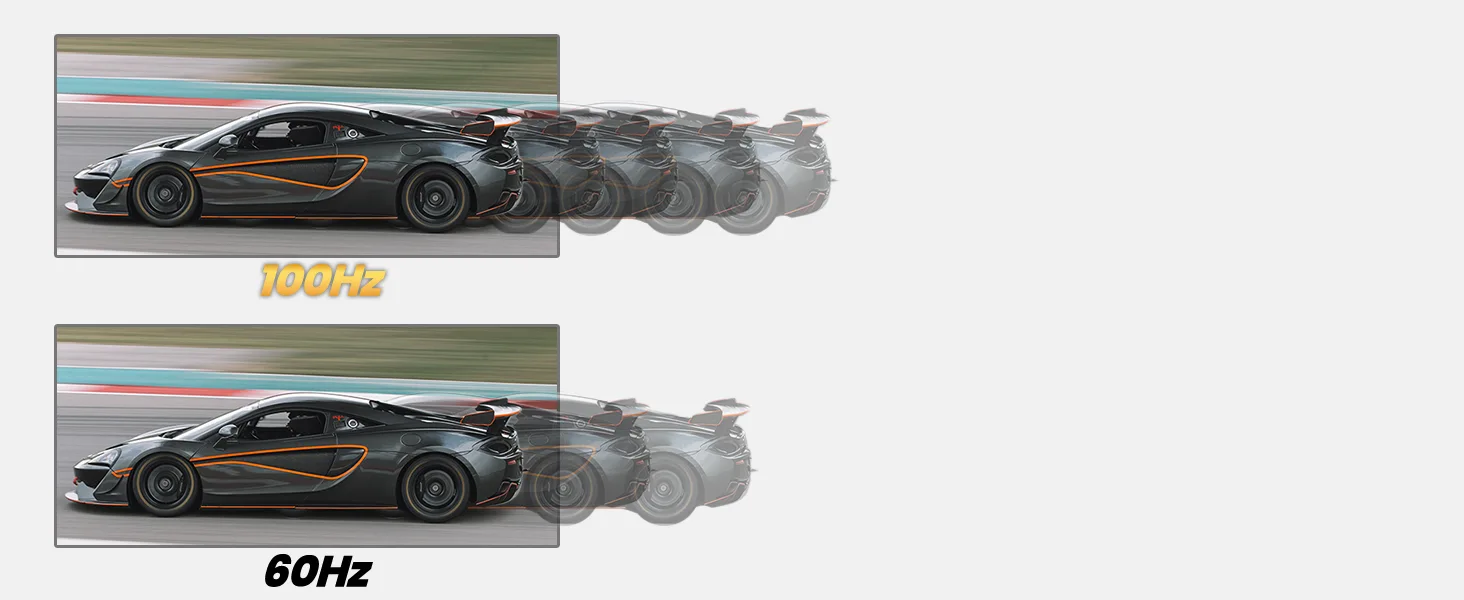If you’ve been shopping around for a new gaming display or just upgrading your work setup, you might’ve come across the term “1 ms monitor” and wondered what it really means. Is it just another spec thrown around to make a product sound better? Or does it genuinely affect your experience?
Let’s break it down in plain language and walk through what a 1 ms response time means, why it matters, and how it compares to other monitors on the market today.
What Does 1 ms Mean on a Monitor?
The “1 ms” in a monitor spec refers to its response time, specifically how fast a pixel can change from one color to another—usually from gray-to-gray (GtG). A 1 ms response time monitor can make these transitions in just one millisecond. In real-world terms, that means images on your screen update faster and more smoothly, which is especially helpful for fast-paced gaming or video.

Monitors with slower response times—like 5 ms or 7 ms—might show a bit of blurring or ghosting when things move quickly on screen. With a 1 ms gaming monitor, you’ll get cleaner visuals during action scenes, making everything from racing games to first-person shooters feel more responsive and accurate.
Why Is Response Time Important?
Response time plays a key role in reducing motion blur. The faster a monitor can update pixels, the less likely you are to see trailing images or artifacts during motion. While it may not matter much when you’re browsing the web or working on documents, it’s crucial for competitive gamers who need every bit of clarity and speed.
This is especially true when paired with a high refresh rate. A monitor 144 Hz 1 ms, for instance, combines fast frame refreshes with equally fast pixel updates. That’s what creates the buttery smooth visuals so many gamers chase.
Is a 1 ms Monitor Good for Gaming?
Absolutely. A gaming monitor 1 ms is one of the top choices for gamers who want low input lag and sharp motion clarity. When combined with a 144 Hz, 165 Hz, or even 240 Hz refresh rate, the difference becomes instantly noticeable, particularly in fast-paced genres.

Many models like the LG – UltraGear 32” Nano IPS QHD 1-ms G-Sync compatible monitor with HDR – Black or the LG – UltraGear 27” IPS QHD 1-ms G-Sync compatibility monitor – Black are built specifically for gamers looking to reduce blur and input delay. These screens often come with G-Sync or FreeSync support too, ensuring a tear-free experience.
Other great examples include the BenQ RL2455HM Black-Red 24″ 1 ms (GtG) HDMI widescreen LED backlight LCD monitor and the Acer Nitro XV1 – 27″ monitor Full HD 1920 x 1080 240Hz IPS 1 ms. These are perfect for those who want both visual speed and image quality without breaking the bank.
Are All 1 ms Monitors the Same?
Not quite. While many monitors advertise 1 ms response time, the panel type behind the screen makes a big difference in real-world performance.
- TN Panels (Twisted Nematic): Known for offering the fastest response times, often true 1 ms. However, color reproduction and viewing angles can be limited.
- IPS Panels (In-Plane Switching): Typically have better colors and viewing angles but used to have slower response times. That’s changed with models like the LG – UltraGear 27” Nano IPS QHD 1-ms G-Sync Compatible Monitor with HDR – Black Review, which now offer 1 ms performance with IPS quality.
- VA Panels (Vertical Alignment): Great contrast and deeper blacks, though traditionally slower response than TN or IPS.
That’s why when choosing a monitor 1 ms, it’s worth looking at the panel type as well, especially if you also care about color quality and viewing comfort.
What About Overdrive and Gimmicks?
Many monitors achieve the advertised 1 ms response time using overdrive technology. Overdrive pushes the pixels to transition faster by applying higher voltages. It’s a helpful trick, but when pushed too hard, it can introduce inverse ghosting or halo effects.
Some budget models claiming 1 ms may only hit that number under specific conditions or only when overdrive is maxed out. That’s why it’s essential to look for in-depth reviews or test it yourself if possible.
Does a 1 ms Monitor Mean No Motion Blur?
While a 1 ms response monitor greatly reduces motion blur, it doesn’t eliminate it completely. Blur can also come from refresh rate, poor overdrive tuning, or even the type of content you’re watching.

However, if you combine a 1 ms response time with a monitor 240 Hz 1 ms rate, like the BenQ GL2780 27 Inch 1080p 1 ms 75 Hz LED Eye-Care Gaming Monitor, you’ll notice significantly sharper and smoother visuals during high-speed action.
What If I’m Not a Gamer?
You might be wondering—if I’m just doing basic work or watching YouTube, do I even need a 1 ms 1080p monitor?
The answer: not necessarily, but it can still improve your experience. For example, a 1 ms input lag monitor feels more responsive in general use. Webpages scroll smoother, videos feel crisper, and the screen responds a bit faster overall.
For professionals like video editors or digital artists, monitors like the BenQ GL2706PQ 27 Inch 1440p Gaming Monitor | 1 ms (GtG) Response Time might be appealing because they offer both fast response and high resolution.
Are 1 ms Monitors Expensive?
Not always. While high-end displays like the LG UltraGear 49″ LED Curved Dual QHD 1-ms FreeSync Monitor Black 49GR85DC-B can be pricey, there are budget-friendly options too.
You can find affordable models like:
- HP Omen 27i 27″ 2560x1440px IPS 165Hz 1 ms
- AOC 75 Hz 1 ms monitor
- ASUS Monitor 1 ms and Acer Monitor 1 ms series
Even the BenQ GL2480 24 Inch 1080p 1 ms 75 Hz LED Eye-Care Gaming Monitor comes at a great price with impressive features.
Popular Models to Look Out For
Here’s a rundown of some recommended 1 ms monitors for different needs:
- Gaming: Acer Nitro XV1, LG UltraGear series, ASUS TUF Gaming line
- Budget Picks: BenQ GL2480, Samsung Odyssey G5 C34G55TWWP 34 Zoll UWQHD (1 ms response time, 165 Hz)
- General Use: HP 25es 25″ 7 ms (GTG), BenQ GL2706PQ
For those looking for compact setups, a 27 inch 144Hz 1 ms monitor strikes a perfect balance between size, speed, and clarity.
Final Thoughts: Is a 1 ms Monitor Worth It?
If you’re into gaming, especially fast-paced titles like Call of Duty, Fortnite, or racing sims, then yes—a 1 ms gaming monitor is absolutely worth the investment. The fluid visuals, reduced blur, and competitive edge it offers are hard to beat.
For casual users or professionals, it depends on your needs. A .1 ms monitor or high-speed display might not be essential, but the added responsiveness is a nice bonus for everything from watching movies to editing videos.
At the end of the day, the 1 ms monitor meaning is all about speed and smoothness. It’s not a gimmick—it’s a real performance factor. Just make sure to match it with other important specs like refresh rate and panel type, and you’ll end up with a screen that truly delivers.
If you’re looking to explore the market, consider trusted models like the Acer 27″ Widescreen LCD Monitor Display WQHD 2560 x 1440 1 ms | XB271HU ABMIPRZ or any of the LG – UltraGear 27” IPS QHD 1-ms G-Sync Compatibility Monitor – Black lineup.
With dozens of models available, there’s a PC monitor 1 ms out there that fits your budget, setup, and performance needs. Just be sure to check reviews, know your priorities, and choose the one that fits your workflow or playstyle best.